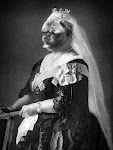I am not a regular patron of the Kansas City Chamber Orchestra (KCCO), and thus have only heard them 2-3 times in the last few years. A pair of tickets, given to me by a neighbor who was out of town for the week, allowed my friend Barb and I to attend "Baroque By candlelight" on Valentine's night at the lovely Visitation Catholic church. As usual, founder and music director Bruce Sorrell conducted.
The woefully inadequate KCCO website never lists the full program. Thus until I was at the venue did I know what was on for the evening besides the advertised "featured" Bach Brandenburg # 5 that sufficed for the last half of the evening. I was pleased to see the first half had some interesting and less well known works, a Telemann Suite in G major "Don Quixote" and the Purcell Suite from "Dido and Aeneas". Sandwiched in was the obligatory Vivaldi, the Concerto For Violin, Cello and Strings in Bb.
The Telemann is a charming work; descriptive. melodic and engaging. This performance, unfortunately, suffered from a lack of variety between the respective movements; "Quixote Awakes" was not much different than "Quixote Asleep". The small orchestra sounded good, especially the violin and cello, but the lack of tempi contrast diminished the dance elements inherent in the work.
The Vivaldi was better played, but the lovely slow central movement was marred by some iffy violin solo intonation. Otherwise a bouncy, serviceable performance; likely the best of the evening.
Purcell's music may have subscribed formally to the Italian and French models that dominated Baroque music but his music also reflects the stately elegance of the English Court plus the folk rhythms and forms of England. Dido is one of the high points of English music, with the famous Dido's Lament "When I am Laid" one of its crown jewels.
The suite of dances, preludes and orchestrated arias includes the famous lament in a version with strings, continuo and winds (flute and oboe). Again, slow tempi made the music dour rather than dramatic and grave. The dances gave some respite and the lament was properly plaintive. I expected a bit more polish and atmosphere.
The "featured" Brandenburg # 5 needs no introduction. Starting off nicely with a well judged, sprightly tempo the first movement promised a more lively second half. Sadly that was not to be the case.
As I was early to the performance, I had the chance to hear a bit of the opening concert lecture. The presenter took great pains as did the program notes, to point out the one-of-a-kind in America, rare and exquisite, super-duper, world class harpsichord owned by the KCCO's harpsichordist. The instrument may be fabulous, well built and authentic, but for the evening's purpose it was tinny, light sounding and distant. I realize a continuo is not in the forefront of the ensemble, but I could rarely hear it (the other instruments were crystal clear); thus it failed in its mission of providing support and filling in the harmonies of the orchestra.
This presented a huge problem in the Bach as the first movement features a long and virtuosic harpsichord cadenza rarely equaled in music. Rebecca Bell labored mightily but the sound was muffled and tinny. It sounded as if it was played in the other room, truly a manifestation of Sir Thomas Beecham's famous quip "The sound of a harpsichord - two skeletons copulating on a tin roof in a thunderstorm". After concert conversation indicated I was not alone in my disappointment of the harpsichord sound.
The second movement of the Bach was a study in motionlessness. The conductor stepped away, allowing the flute, violin and continuo to take it on their own. As if a clock winding down, the movement finally collapsed due to lack of inertia.
The final movement got a back on tempo but the piece was on the whole an amateur performance from a professional crew.
Sadly too, the venue could have had more atmosphere. A constellation of candles was placed behind the performers providing a splendid backdrop. However, the house lights were turned up too high, negating the effect completely. Visitations sanctuary, redone in 2004, is a bit too stark and open, certainly not in a baroque tradition.
A nice concept, a well thought out program, poorly executed. Not one of my concert highlights of the season.
Friday, February 15, 2008
Subscribe to:
Post Comments (Atom)



No comments:
Post a Comment